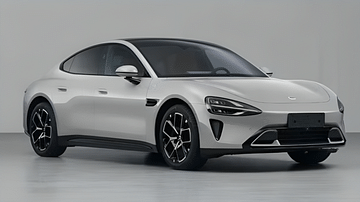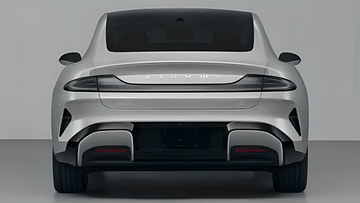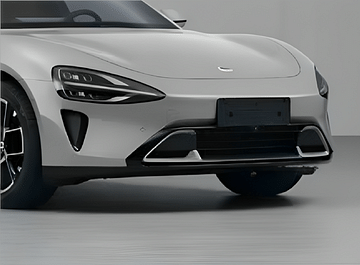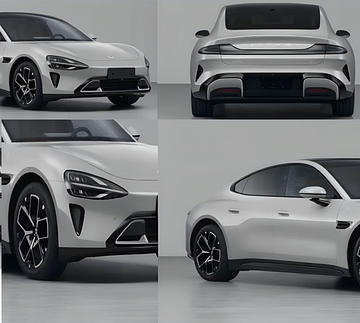
KEY HIGHLIGHTS
- Three variants: SU7, SU7 Pro, and SU7 Max
- RWD at 295 bhp, AWD at a substantial 663 bhp
- Lower variants at 210 kmph, higher variants at 265 kmph
- Mass production starts in December 2023, deliveries begin in February 2024
When we hear the name Xiaomi, most of us immediately think of smartphones from this brand. However, Xiaomi is now taking a new leap into the automobile industry by introducing its first electric vehicle in China, named the SU7. This electric sedan comes in two versions: one with Lidar and one without Lidar. Keep reading to get all the details!
Also Read: Delhi Doubles Parking Fees Amid Escalating Pollution Until January 2024!
Introducing the Xiaomi SU7 EV: Featuring Both RWD And AWD Options

The electric sedan is set to be available in three versions: SU7, SU7 Pro, and SU7 Max, each offering distinct features. Buyers can choose between two powertrain options: Rear-Wheel Drive (RWD) and All-Wheel Drive (AWD).
The rear-wheel-drive (RWD) version of the car will feature a single electric motor positioned at the back, generating 295 bhp. On the other hand, the all-wheel-drive (AWD) model will boast 663 bhp. The AWD system comprises a 295 bhp electric motor at the front axle and a 368 bhp electric motor at the rear axle. Both RWD and AWD options are said to offer a maximum motor power of 495 kW (220 kW + 275 kW).
Also Read: Toyota Fortuner, Now Available Sooner with a 12-week Waiting Period!


For the more budget-friendly trims, the battery packs will be supplied by BYD, utilizing an LFP unit. Meanwhile, the higher-end trims with larger battery packs will utilize NMC battery packs from CATL. The top speed for the more affordable variants is set at 210 kmph, while the higher-end variants can reach up to 265 kmph.
Electric cars tend to carry substantial weight due to the battery, and the Xiaomi SU7 is no exception, boasting a curb weight ranging from 1,980 kg to 2,205 kg for the top-end trim. The overall dimensions measure 4997 x 1963 x 1455 mm, with a specified 3000mm wheelbase and a choice between 19-inch and 20-inch wheels. An additional option includes a Lidar sensor. Notably, the HyperOS integration is anticipated to be a key feature, enhancing the appeal of these electric vehicles.

Xiaomi envisions its upcoming operating system, HyperOS, to be a user-friendly platform that seamlessly links cars, smart home gadgets, and personal devices in a cohesive "smart ecosystem." Originally designed for Xiaomi phones, there's speculation that HyperOS might extend its capabilities to the company's electric vehicles. This move suggests a strategic integration of software across Xiaomi's product range, aiming to create a more interconnected and user-friendly experience for consumers.
The mass production of the Xiaomi SU7 is set to kick off in December 2023, with deliveries slated to commence in February 2024. The trial production has already begun at BAIC's Beijing factory, and test vehicles are already making their way off the production line.
Verdict
Xiaomi's entry into the electric vehicle realm with the SU7 showcases a thoughtful blend of performance, versatility, and connectivity. The diverse lineup and integration of innovative features like Lidar and HyperOS make it a promising player in the growing electric car landscape. In the Indian market, you can find an array of electric vehicle models, including the Tata Nexon EV, Mahindra XUV400, Volvo C40 Recharge, Hyundai Ioniq 5, Kia EV6, BMW iX1, Mercedes-Benz EQC SUV, and several others. Stay up to date with all the automotive news and updates by joining our 91Wheels Whatsapp Group today!
Also Read: Temporary Pause On Toyota Land Cruiser Bookings: All the Details Here!





















